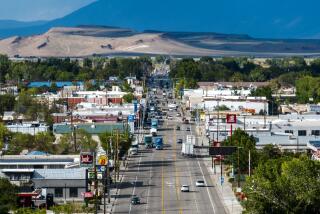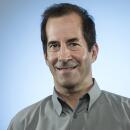Researcher Maps Out Orange County’s Right-Wing History
For nearly four decades, the mention of Orange County brought one thing to mind throughout the country, and it wasn’t Disneyland--it was the right-wing attitudes of the people living there.
Now, a Harvard University researcher is writing the first history of the right wing in Orange County.
“Orange County was ahead of its time, ahead of the rest of the country,” said Lisa McGirr, who is compiling the first social history of the right in Orange County. “In terms of conservatives’ impact on the nation, Orange County really was the land of tomorrow in the ‘60s, on the cutting edge of conservative activity.”
McGirr says a variety of forces came together in the ‘60s to turn Orange County into the most visible symbol of conservatism in the country, what Fortune magazine, no bastion of liberalism, called “America’s nut country.”
“While some of these factors were present in other areas of the United States, nowhere did they come together in such a powerful way as they did” in Orange County, McGirr said.
Those forces were:
* The number of men working in the booming defense industry and the largely white-collar people who followed to provide services and who “saw their own lives as tributes to the possibilities of individual entrepreneurial success.”
* The conservative churches that helped fill the social void those newly arrived from elsewhere felt coming into this vast suburbia.
* A network of regional institutions that pushed the conservative agenda, including wealthy businessmen who set up right-wing organizations, distributed conservative tracts and established a libertarian newspaper.
Once the right-wing culture was sown, it attracted like-minded people and grew, McGirr found. For example, in 1962 there were about 800 members of the ultra-right-wing John Birch Society in the county, McGirr said, a group so conservative that it believed that President Eisenhower was part of a Communist conspiracy. Three years later, the number increased sixfold.
McGirr, 35, is among a group of historians and sociologists, many of them political liberals, who are reexamining the right-wing movement in America. Earlier studies characterized those on the right as unbalanced psychologically and suffering from status anxiety.
Orange County “is the most important place in the country if you’re looking at the long-term rise of the right,” said Jerome Himmelstein, a sociology professor at Amherst College in Massachusetts and author of “To the Right: The Transformation of American Conservatism.”
“It’s not that important now,” Himmelstein said, “but if you’re looking in the ‘50s, ‘60s and early ‘70s, it was really a fountainhead of support for right-wing candidates when they needed it.”
McGirr started her research on Orange County as part of her doctoral thesis at Columbia University. She expects to complete the book in summer 1999. “I came to Orange County through this idea of looking for a place where ordinary men and women made history on the right,” she said.
Her research doesn’t focus on the elite who wrote papers in think tanks and magazines such as William F. Buckley’s National Review, but on the grass-roots level.
“We don’t tend to think of people in backyard barbecues to be so inspired in politics,” McGirr said. “These people in coffee klatches were trying very much to build a movement.”
The historian talks about “conservative Christian defense industry engineers who sought to protect local schools against subversion, entrepreneurs who preached against the welfare state, libertarian newspaper editors who saw taxation as robbery and housewives who fought sex education in the schools.”
“These people would eventually become some of the leaders of the grass-roots conservative mobilization of the ‘70s,” McGirr said.
The right-wing movement really started to blossom in the county in late 1960 when conservatives recalled Joel Dvorman, a school board trustee and war veteran, because he was a member of the American Civil Liberties Union. It wasn’t long before more fringe groups such as the Christian Anti-Communist Crusade began to be taken seriously in the county while they railed against what they considered subversive liberals.
These same people helped Barry Goldwater win the California Republican primary in 1964, which led to his nomination for president and, later, Ronald Reagan’s election to governor.
While doing her research, McGirr came across interesting tidbits about Reagan. In 1960, for example, the future president’s statements were close to the apocalyptic visions of the radical right.
According to Reagan, “One of the foremost authorities on communism in the world today has said, ‘We have 10 years. Not 10 years to make up our minds, but 10 years to win or lose--by 1970 the world will be all slave or free.’ ”
More to Read
Sign up for Essential California
The most important California stories and recommendations in your inbox every morning.
You may occasionally receive promotional content from the Los Angeles Times.











